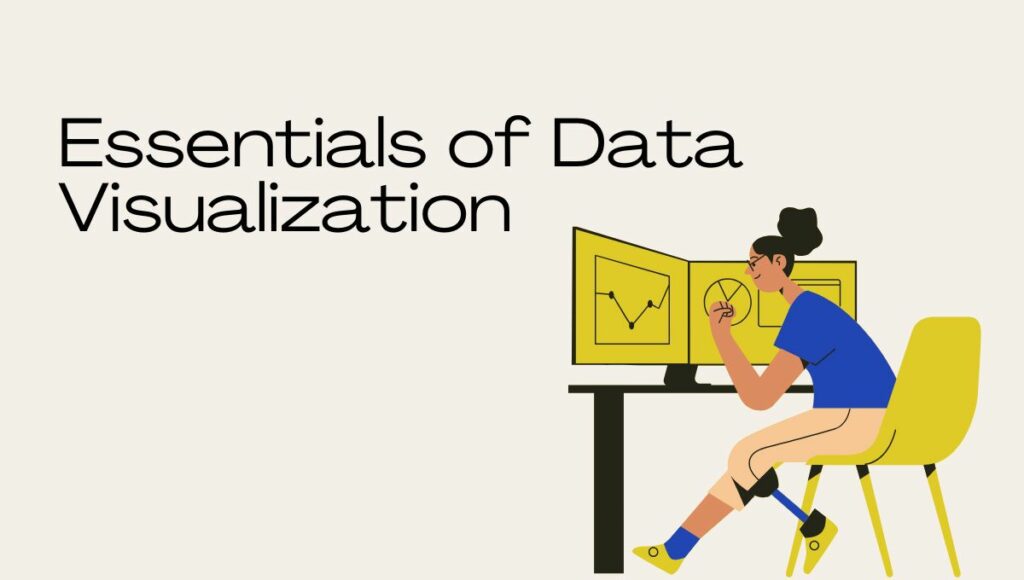Data visualization is a powerful tool that can transform raw data into meaningful insights. We can quickly identify patterns, trends, and anomalies that might be difficult to discern from numerical data alone by presenting information in a visual format.
Enrol in Imarticus Learning’s data science course to learn data visualization and all the important tools and technologies for visualizing data.
Understanding the Basics of Data Visualization
Before we dive into specific techniques, it's essential to grasp the fundamental principles of data visualization:
1. Clarity and Simplicity
- Clear Titles and Labels: Ensure that your visualizations have clear and concise titles and labels.
- Consistent Formatting: Use consistent fonts, colours, and formatting throughout your visualizations.
- Avoid Clutter: Keep your visualizations clean and uncluttered by focusing on the most important information.
2. Effective Use of Colour
- Colourblind-Friendly Palettes: Choose colour palettes that are accessible to people with colour vision deficiencies.
- Meaningful Colour Coding: Use colour to highlight specific categories or trends.
- Avoid Overuse of Colours: Too many colours can overwhelm the viewer.
3. Appropriate Chart Choice
- Consider Your Audience: Choose a chart type that is suitable for your audience's level of expertise.
- Match Chart Type to Data: Select a chart type that best represents the data you want to convey.
Top Data Visualization Techniques
Histograms
Histograms are used to visualize the distribution of numerical data. They divide the data into bins or intervals and count the number of observations that fall into each bin.
Key features:
- X-axis: Bins or intervals of the numerical variable.
- Y-axis: Frequency or count of observations in each bin.
- Shape of the Distribution: Symmetric, skewed, or bimodal.
- Central Tendency: Mean, median, and mode.
- Spread: Range, interquartile range, and standard deviation.
Applications:
- Understanding the distribution of a continuous variable.
- Identifying outliers and anomalies.
- Comparing distributions of different groups.
Box Plots
Box plots provide a concise summary of a dataset's distribution, highlighting key statistical measures:
Key features:
- Box: Represents the interquartile range (IQR), containing the middle 50% of the data.
- Whiskers: Extend from the box to the minimum and maximum values, excluding outliers.
- Median: A line within the box that represents the 50th percentile.
- Outliers: Data points that fall outside the whiskers.
Applications:
- Comparing distributions of different groups.
- Identifying outliers and anomalies.
- Assessing variability within a dataset.
Pie Charts
Pie charts are used to show the proportion of different categories within a whole. Each slice of the pie represents a category, and the size of the slice corresponds to its proportion.
Key features:
- Slices: Represent different categories.
- Size of Slices: Proportional to the frequency or percentage of each category.
- Labels: Identify each slice and its corresponding value.
Applications:
- Visualizing categorical data.
- Comparing the relative sizes of different categories.
Scatter Plots
Scatter plots are used to visualize the relationship between two numerical variables. Each data point represents a pair of values, and the position of the point on the plot indicates the values of the two variables.
Key features:
- X-axis: One numerical variable.
- Y-axis: Another numerical variable.
- Data Points: Represent individual observations.
- Trend Line: A line that summarizes the overall trend in the data.
- Correlation: The strength and direction of the relationship between the two variables.
Applications:
- Identifying correlations between variables.
- Making predictions.
- Visualizing clustering and outliers.
Choosing the Right Visualization Technique
The choice of visualization technique depends on the specific data and the insights you want to convey. Consider the following factors:
- Type of Data: Numerical or categorical.
- Number of Variables: One, two, or more.
- Relationship between Variables: Correlation, causation, or independence.
- Audience: The level of technical expertise of your audience.
- The Goal of the Visualization: To explore data, communicate findings, or make decisions.
Other Advanced Data Visualization Techniques
Time Series Plots
Time series plots are used to visualize data that is collected over time. They are particularly useful for identifying trends, seasonality, and cyclical patterns.
Key features:
- X-axis: Time (e.g., date, time, or specific intervals).
- Y-axis: The numerical variable being measured.
- Line Chart: Connects data points to show trends and patterns.
- Bar Chart: Represents data at specific time points.
Applications:
- Tracking sales over time.
- Monitoring stock prices.
- Analysing website traffic.
Choropleth Maps
Choropleth maps are used to visualize geographical data by colouring regions or countries based on a numerical value. They are effective for showing spatial patterns and variations.
Key features:
- Geographical Base Map: A map of a specific region or the entire world.
- Colour-Coded Regions: Regions are coloured based on the value of a numerical variable.
- Colour Legend: Explains the meaning of different colours.
Applications:
- Visualizing population density.
- Mapping disease outbreaks.
- Analysing economic indicators.
Heatmaps
Heatmaps are used to visualize data matrices, where rows and columns represent different categories. The intensity of colour in each cell represents the value of the corresponding data point.
Key features:
- Rows and Columns: Represent different categories.
- Colour-Coded Cells: The colour intensity indicates the value of the data point.
- Colour Bar: Explains the meaning of different colours.
Applications:
- Analysing correlation matrices.
- Visualizing customer segmentation.
- Identifying patterns in large datasets.
Interactive Visualizations
Interactive visualizations allow users to explore data dynamically. They can zoom, pan, filter, and drill down into data to uncover hidden insights.
Key features:
- Dynamic Elements: Users can interact with the visualization to change its appearance.
- Tooltips: Provide additional information when hovering over data points.
- Filters and Sliders: Allow users to filter and subset the data.
Applications:
- Creating engaging and informative dashboards.
- Enabling exploratory data analysis.
- Sharing insights with a wider audience.
Wrapping Up
Data visualization is a powerful tool that can transform raw data into meaningful insights. By understanding the principles of effective visualization and selecting the appropriate techniques, you can create compelling visualizations that communicate your findings clearly and effectively.
Remember to prioritise clarity, simplicity, and the appropriate use of colour. By following these guidelines and exploring the diverse range of visualization techniques available, you can unlock the full potential of your data and make data-driven decisions with confidence.
If you wish to become an expert in data science and data analytics, enrol in Imarticus Learning’s Postgraduate Program In Data Science And Analytics.
Frequently Asked Questions
What is the best tool for data visualization?
The best tool depends on your specific needs and skill level. Popular options include Python libraries (Matplotlib, Seaborn, Plotly), R libraries (ggplot2, plotly), Tableau, Power BI, and Google Data Studio.
How can I choose the right visualization technique?
Consider the type of data, the insights you want to convey, and your audience. Numerical data often benefits from histograms, box plots, and scatter plots, while categorical data is well-suited for bar charts and pie charts. Understanding histograms and other techniques properly will help you decide more effectively.
How can I improve the readability of my visualizations?
Prioritise clarity, simplicity, and effective colour use. Use clear labels, avoid clutter, and choose a colour palette that is both visually appealing and informative.
What are some common mistakes to avoid?
Overusing 3D charts, using too many colours, choosing the wrong chart type, ignoring context, and neglecting to label axes and data points are common pitfalls to avoid. We should also avoid making any inaccurate interpretations when working on model features such as a boxplot interpretation of an overfitted or underfitted dataset.









